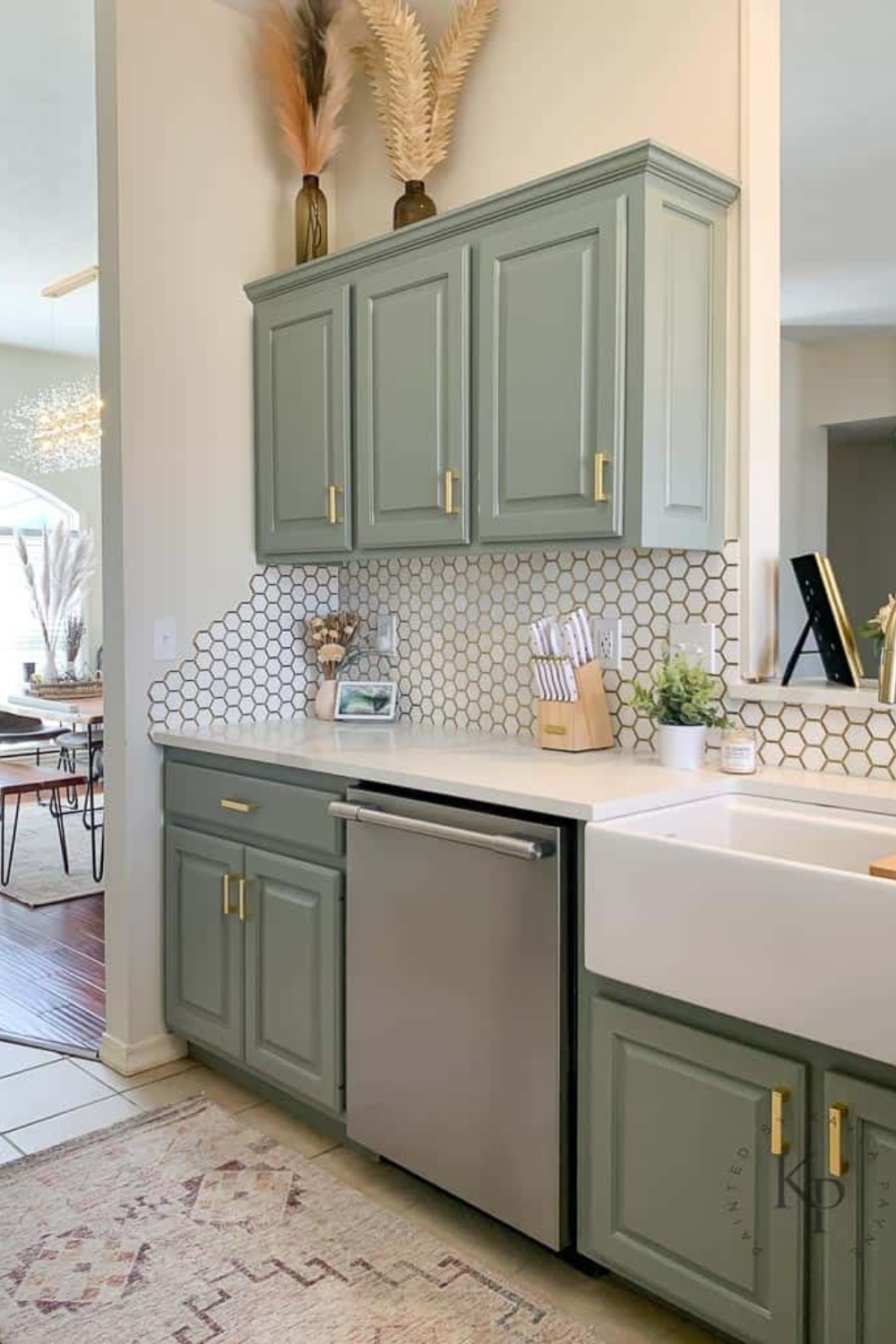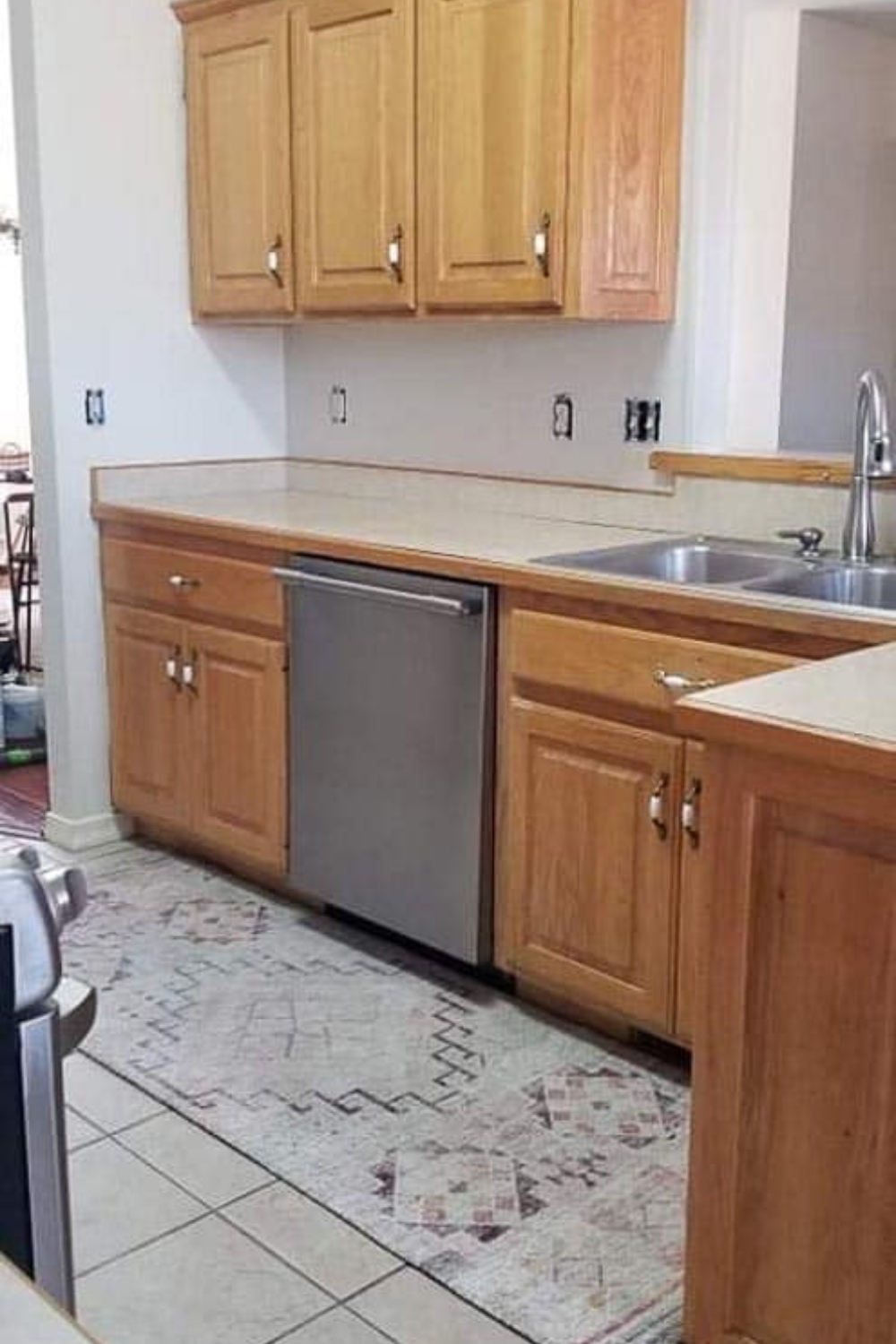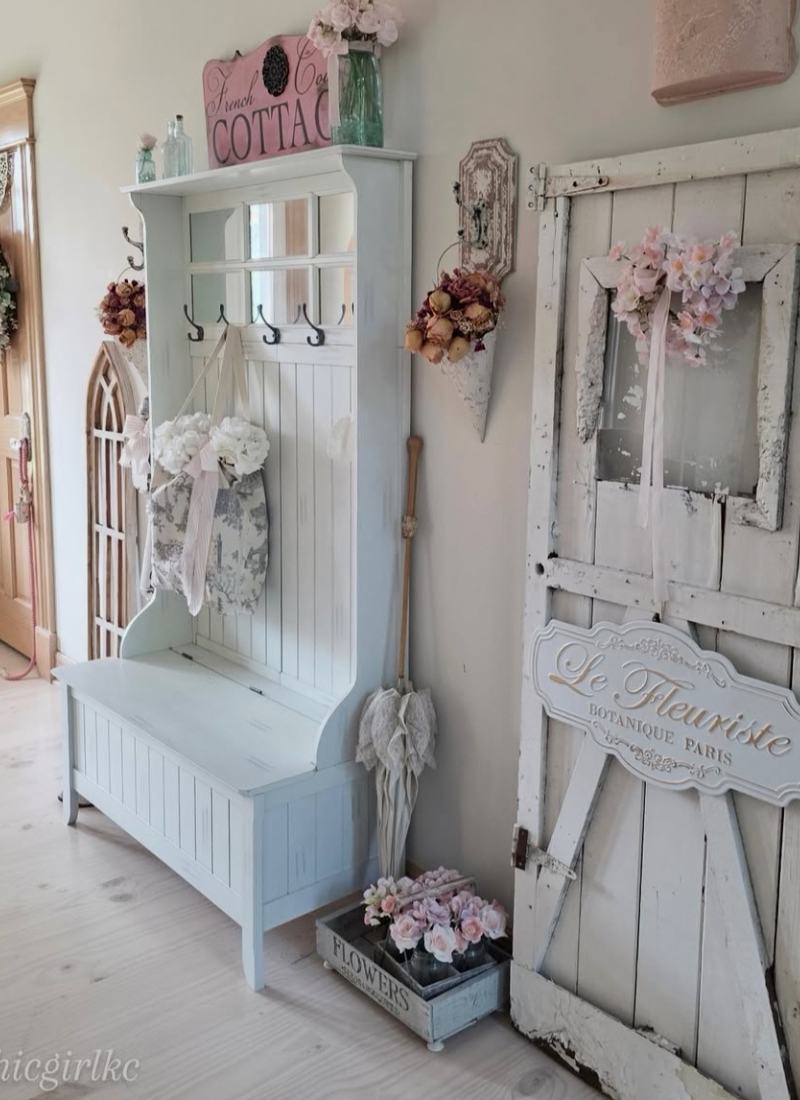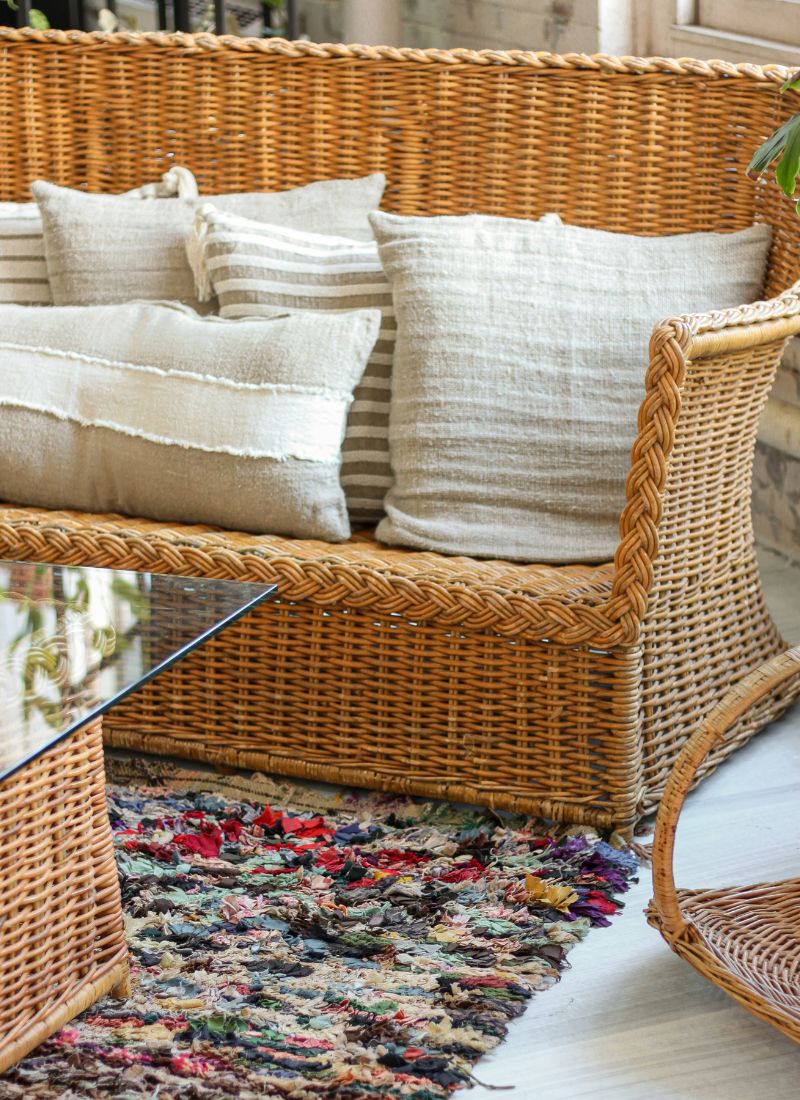Hey all! My name is Julia, former college student and a home decor enthusiast who loves DIY home improvement projects and finding creative ways to decorate any living spaces on a budget. Recently moved from my dorm to my new apartment which I renovated from scratch and I am here to help you with tips & tricks about home decor/college and more 🙂
Thinking about giving your kitchen cabinets a fresh new look? Choosing the right paint makes all the difference—here’s what you need to know about the best paints for kitchen cabinets so your makeover turns out smooth, durable, and beautiful.
Let’s be real—nobody wants peeling, sticky cabinets, especially if you’re diving into a DIY kitchen cabinet painting project.
The best paint for kitchen cabinets is a high-quality acrylic enamel or alkyd paint, hands down.
It dries hard, looks legit, and stands up to daily wear (my little cousin’s spaghetti sauce disasters come to mind).
I’ve tried a bunch of top-rated kitchen cabinet paint picks, and honestly, using stuff from Benjamin Moore or Sherwin-Williams is a total game-changer.
If you’re after the best paint to use on kitchen cabinets that won’t chip every time you nudge a coffee mug, don’t go cheap—your patience will thank you. Oh, and don’t forget: the finish matters!
Whether it’s satin vs semi-gloss finish for cabinets, you want something wipeable but not too shiny.
If you’re wondering what is the best cabinet paint for a long-lasting, smooth look, stick around—I’ve got you covered.
Choosing the Best Paint for Kitchen Cabinets
Key Factors for Selection
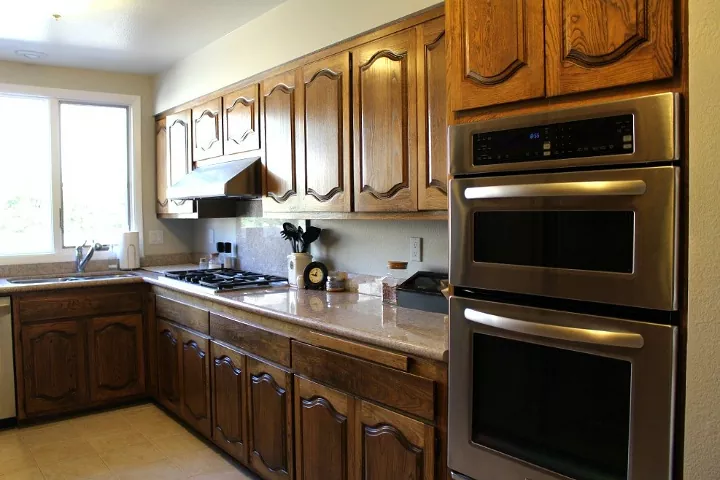

Start with durability—you want something that stands up to daily use, spills, and cleaning.
Most folks go for a satin or semi-gloss finish because it wipes clean and doesn’t show fingerprints as much as flat paint.
Don’t skip primer. The best primer for kitchen cabinets makes your paint last longer, especially on tricky surfaces like laminate.
If you want to skip sanding (and who wouldn’t?), grab a bonding primer made for cabinets.
A bonding primer will let your paint stick, so the finish won’t peel off after a couple of months.
From everything I’ve tried, Benjamin Moore Advance and Sherwin-Williams Emerald Urethane Trim Enamel are kind of the GOATs for cabinet paint—super smooth, tough as nails, and easy to clean.
If you’re on a budget, Behr’s Alkyd Semi-Gloss Enamel is a solid bet and you can find it at most Home Depots.
Matching Paint to Cabinet Material
Wood cabinets are the easiest to paint.
Just clean, sand, and you’re good to go with almost any best kitchen cabinet paint out there—especially ones labeled ideal paint for kitchen cabinets.
For the best look, a high-bond primer and a couple coats of recommended paint for kitchen cabinets will make those wood grains disappear (if that’s your thing).
Laminate cabinets are a bit trickier.
You have to use a specialty bonding primer first or the paint won’t stick.
After that, any good paint for kitchen cabinets or most durable paint for kitchen cabinets will do the job, but seriously don’t skip the primer step or you’ll regret it.
Types of Paints for Kitchen Cabinets
Latex vs Oil-Based Paints
Latex and oil-based paints are the OG standard for kitchen cabinets.
If you want low odor and easy soap-and-water cleanup, latex paint is the way to go.
It dries faster and won’t yellow over time, which is nice if you like your whites crisp.
Go for an enamel latex, since it’s harder and better for high-traffic areas.
Oil-based paint is kind of the old-school answer to “what is the best paint for kitchen cabinets?”
It’s strong, forms a super smooth finish, and gives you years of durability.
But, honestly, the fumes are intense and cleaning up is a pain (hello, paint thinner).
It can yellow, especially in rooms with not a ton of natural light.
Hybrid Alkyd Enamels
Hybrid alkyd enamels are kind of a game-changer if you want the best of both worlds.
These paints (like INSL-X Cabinet Coat or Benjamin Moore Advance) are water-based but act like old-school oil-based in terms of smoothness and durability.
You get that hard, furniture-quality finish without the heavy fumes. Cleanup is a snap—just soap and water.
They’re less likely to yellow than traditional oil, which is a win.
All-In-One Paints
All-in-one paints are made for people who want an easier, faster kitchen cabinet refresh.
Products like Heirloom Traditions Paint or newer lines from Behr and Rust-Oleum basically mix primer, color, and topcoat in a single can.
You just clean, maybe do a light scuff, and start painting—no separate primer or topcoat needed.
This is clutch for renters, first-timers, or anyone who wants to skip the whole multi-step marathon.
One heads up: They may not be quite as hard and smooth as the “big guns” (like hybrid alkyds or old-school oil), so consider how tough your kitchen traffic is before choosing the best all-in-one cabinet paint for your home.
Popular Paint Brands and Products
Benjamin Moore Advance
Benjamin Moore Advance is the gold standard for many DIYers and pros.
This paint has a super smooth finish that’s honestly hard to mess up, which is why it’s one of the best kind of paint for cabinets.
The self-leveling part really does its job, so even if you’re not a pro, brush marks basically melt away.
It’s a waterborne alkyd, so cleanup is easy but results look pro.
Go for satin or semi-gloss—both look polished but clean easily.
This combo is huge when you want durability but hate sticky clean-up jobs.
You get great coverage in just two coats and colors don’t fade if your kitchen gets lots of sunlight.
BEHR Paints
Budget-friendly and easy to find at Home Depot.
The Premium Plus line is low-odor and durable.
Marquee gives better coverage and color range. Cabinet & Trim Enamel is tougher and made for high-use spots.
If you’re painting on a budget, this is the best cabinet paint for kitchen projects.
Valspar Options
Valspar doesn’t always get the hype it should.
But if you’re shopping at Lowe’s, don’t sleep on it.
Their Cabinet Enamel is legit—optimal paint for kitchen cabinets if you want a factory-smooth finish and you’re working with laminate or wood.
It powers through kitchen messes, so cleaning up after isn’t a chore.
This stuff dries to a smooth, hard shell. That makes it a solid pick for families (sticky PB&J fingers, anyone?).
The big bonus: minimal prep. Sometimes you can skip sanding if you prime first, which definitely saves your weekend.
Valspar Quick Facts
- Type: Acrylic enamel, water-based
- Clean Up: Soap & water
- Sheens: Satin, Semi-gloss
- Best For: Laminate and wood cabinets
- Where To Find: Lowe’s stores
Selecting the Right Paint Finish
Semi-Gloss Finish
If you’re all about easy cleanup, a semi-gloss finish is honestly a game-changer.
It has a noticeable shine—more than satin, but not wild like high-gloss.
This finish reflects light, so your cabinets look brighter and maybe even feel a bit bigger, especially in smaller kitchens.
Grease, fingerprints, and spills wipe right off.
Satin Finish
A satin finish feels a little more chill than semi-gloss.
It has a soft, velvety sheen that doesn’t scream “shiny,” but isn’t totally flat either.
If you like a modern farmhouse or slightly matte vibe (without full-on chalk paint), satin can be a solid move.
What surprised me was how well it hides small scratches or dings.
Satin is more forgiving than a gloss, so if your cabinets see a lot of action (and you don’t want to see every little mark), this is the best kitchen cabinet paint finish for you.
It’s also easy to wipe down, but a bit less slick than semi-gloss.
If you’re wondering, “Satin vs semi-gloss finish for cabinets—which one hides dirt better?”
For me, satin wins on fingerprints, but semi-gloss wins with big, messy splatters.
Prepping Cabinets for Painting
Cleaning and Degreasing
Kitchens get grimy, and that greasy film loves to hang around door handles and trim.
Grab a gentle degreaser or some warm water mixed with a splash of dish soap—skip anything harsh that could mess up the wood.
Wipe down everything: doors, frames, and even hardware spots.
Let the cabinets dry fully so the next steps actually stick.
If you cook a lot (spaghetti night, anyone?), do a second wipe-down, just to be safe.
Any leftover grease will totally mess with paint adhesion, so don’t rush this part.
Sanding for Adhesion
Alright, I used to think sanding was just busywork, but trust me—smooth surfaces don’t hold paint well.
Sanding roughs up that factory finish or old paint so your best kitchen cabinet paint grabs on for dear life.
A sanding sponge or 120–150 grit sandpaper works for most solid wood cabinets.
Focus on edges and corners, but go over everything lightly.
You’re not stripping down to bare wood unless you have seriously old paint or damage.
If you’re looking for ways to skip sanding (we’ve all been there), products like liquid sandpaper technically work.
But I still get better results with an actual light sanding—especially with high-traffic spots.
Using Primer
This step can seriously be a game-changer for durability and finish
A good primer makes all the difference.
It helps the best cabinet refinishing paint grip tightly and evens out old stains, so you’re not fighting yellow splotches bleeding through your perfect best cabinet paint colors. Don’t skimp here!
Use a high-bond, stain-blocking primer to hide stains and help paint grip.
Brush corners, roll the rest. Let it dry fully—primer should feel matte, not sticky.
For extra-smooth results, lightly sand the primer before painting.
Application Tips for a Smooth, Durable Finish
Easy Application Techniques
Start by removing cabinet doors and hardware—the extra effort makes a huge difference.
If you want the the paint to really stick, a light sanding or using a liquid deglosser is key.
Don’t skip priming—it can make even the top-rated kitchen cabinet paint glide on better.
Use a high-quality, synthetic brush or a small foam roller for flat sections.
If you’re all-in, renting the best cabinet paint sprayer gives that “factory” look with almost no texture.
When applying your paint, go for thin, even coats—two or three light layers beat one thick one every time.
Always let each layer fully dry before adding the next.
Avoiding Brush Marks
If you’ve ever painted cabinets and ended up with tons of visible strokes, I feel your pain.
To sidestep brush marks, stick with angled synthetic brushes or foam rollers.
Quality makes a difference—even pricier brushes are worth it for a smooth, streak-free finish.
Lightly sanding between coats (super quick with 220-grit sandpaper) makes things ultra smooth.
Wipe off dust with a damp rag before recoating—dust is the enemy of a durable cabinet paint job.
Using self-leveling paint like Benjamin Moore Advance helps brush marks melt away.
Add a conditioner like Floetrol for extra smoothness.
Curing and Drying Times
Plan for patience: drying and curing are not the same!
Touch-dry might only take a few hours, but for true durable finish that’s chip-resistant, your cabinets need actual curing time—usually a week or more.
Stack cabinet doors on bottle caps or painters’ pyramids so air reaches all sides.
Avoid slapping hardware back on the next day, even if they seem dry.
“Baby” the cabinets for the first week, being careful not to bump or wipe them hard—definitely don’t slam the doors!
FAQ (Frequently Asked Questions)
What is the best cabinet paint?
Oil-based paints used to be the go-to, but now most people (me included!) reach for high-quality acrylic, alkyd, or hybrid enamel paints.
Brands like Benjamin Moore Advance and Sherwin Williams Emerald Urethane are super popular as top-rated kitchen cabinet paint picks.
Acrylic paints dry fast, have low odor, and are easier to clean up.
Look for labels that literally say “best cabinet paint for kitchen”—they’re designed to last.
What kind of finish on paint makes cabinets super easy to clean?
Semi-gloss and satin both work, but if you want something that wipes clean after every meal mess, semi-gloss is your friend.
It resists water spots, greasy fingerprints, and feels a little tougher against regular cleaning.
Can I skip sanding before I paint my kitchen cabinets, and if so, how?
You can skip full-on sanding, but you’ll need a high-bond primer like Zinsser BIN or INSL-X Stix so the paint actually sticks.
Give your cabinets a solid wash—grease is paint’s enemy.
If you really hate sanding, grab a liquid deglosser.
But if your cabinets are super shiny or damaged, don’t skip sanding completely.
Which Sherwin Williams paint is a great match for cabinet makeovers?
Sherwin Williams Emerald Urethane Trim Enamel gets tons of love in cabinet-painting Facebook groups.
It dries hard, levels out streaks, and you can pick from a bunch of finishes—semi-gloss is my go-to for cabinets.
Feeling fresh vibes for your kitchen space – what paint colors are trending for cabinets?
Light, warm neutrals and muted greens are everywhere for 2025.
White is still classic, but soft sage, deep navy, or even a dusty mushroom tone can give cabinets a modern vibe.
Feeling bold? Try a two-tone look—dark on the lowers, light up top.
My favorite cabinet paint colors for a cozy feel: creamy beige or off-whites that aren’t too harsh.
Thinking of going Benjamin Moore – what’s their best paint pick for cabinets?
Benjamin Moore Advance is loved for a reason. It acts like oil but cleans up with water.
Tons of pros say it’s the best paint to use on kitchen cabinets if you’re after a durable, pro-looking finish.
You get a smooth, glassy finish—especially if you use a mini roller or sprayer.
